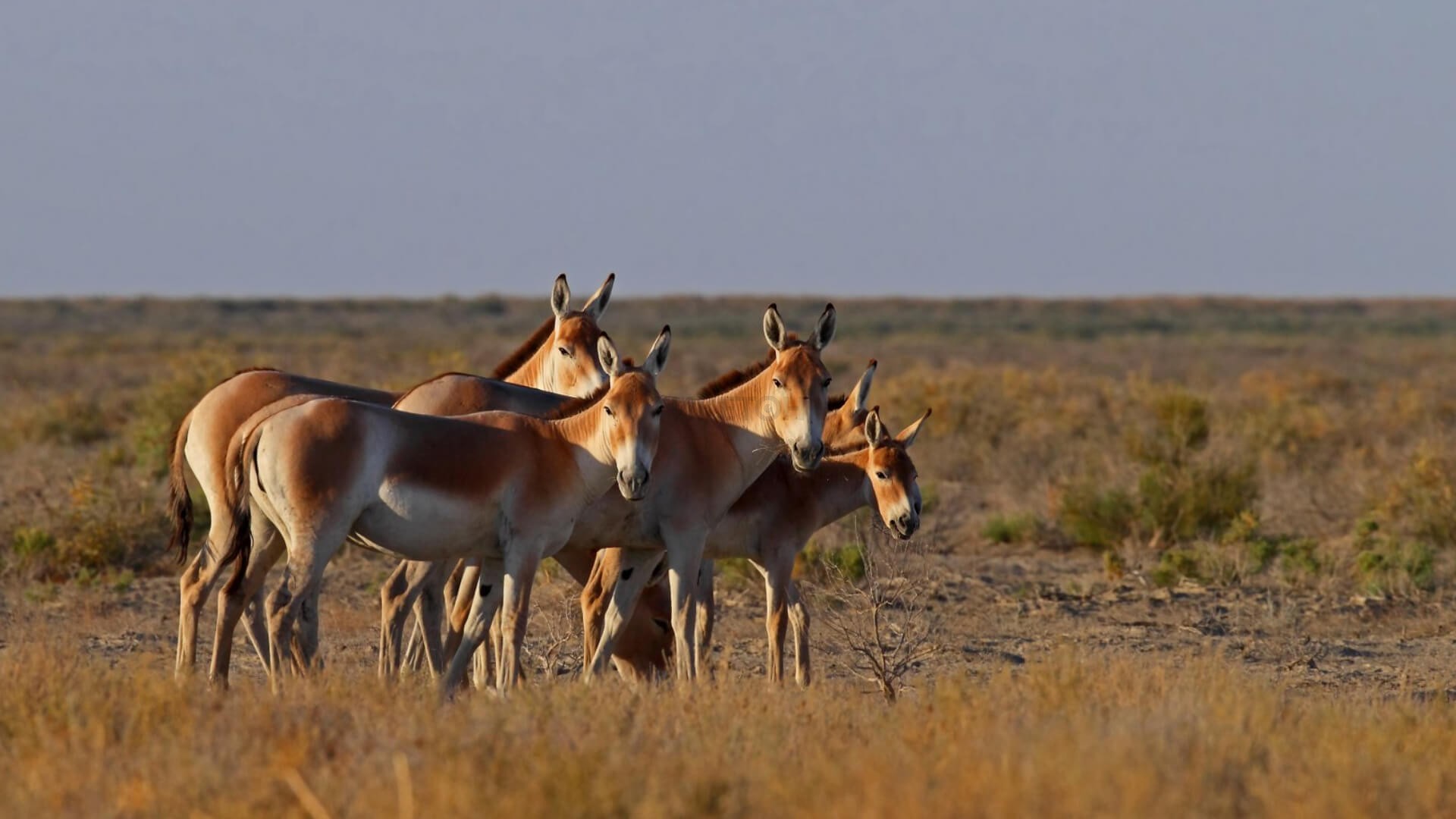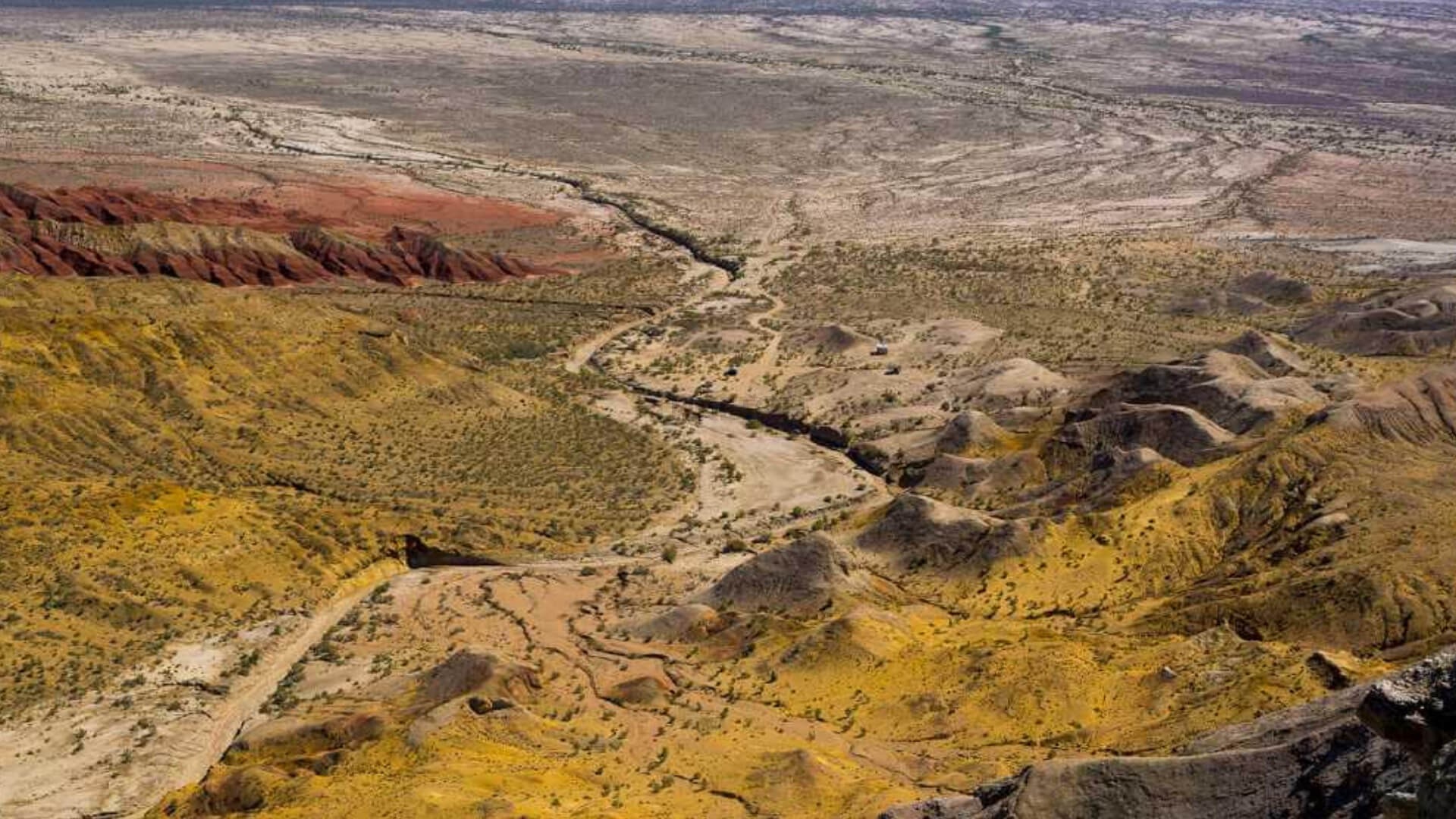Barsakelmes State Nature Reserve

The Barsakelmes State Reserve was established in 1939. The protected area is located on the island of Barsakelmes in the Aral district of Kzyl-Orda oblast. The area of the territory is more than 18 thousand hectares, including 164 hectares — forested.
In geomorphological terms the Barsakelmes Nature Reserve is divided into two main parts: the reservoir-denudation plain and the marine accumulative plain. The formation-denudation plain makes up the main, mainland part of the island and includes a number of smaller geomorphological formations. In the south of the island there is a high plain. Its western half is almost flat, in the eastern part there are gullies and ravines. The high plateau with a rather steep slope passes to a low abrasive plain. Here the relief is more pronounced, there are a number of alternating ridges and depressions, elongated from south to north.
In general, the relief of the island’s surface is soft, only in the south and southwest there are cliffs bounding the plateau up to 60 m above the level of the Aral Sea. On the main part of the island, geomorphological and soil formations characteristic of clay-salt deserts are represented. There are two areas of characteristic “bad lands” (Eastern and Western Kebirsai) — these are systems of gullies and hills with a relative height of up to 10-12 m, covered with plump greenish oligodene clay with sparkling gypsum crystals. There are several drainless depressions, takyrs and puffed solonchaks on the island.
The main massif of the island is composed mainly of Oligocene deposits: greenish-gray gypsum-bearing clays of the Chegan formation, marl gravelites and slab sandstones of the Kutanbulak formation. In some places there are reddish-brownish gypsum-bearing clays of the Lower Miocene Aral formation. Crystalline gypsum is incorporated into clays in the form of steeply falling, sometimes vertical layers or hollow balls, as well as their fragments. Shells of fossil mollusks are found in the clays of the Chegan formation.
The most widespread on the island are gray-brown soils of varying degrees of salinity and the development of the soil horizon: sodium chloride slightly saline alkaline lands are common under silky wormwood deserts, and sodium-sulfate strongly saline alkaline lands are under biyurgun; takyr soils, saltworts, meadow-marsh soils are under reed thickets are also represented. There is no soil layer on a significant area of sand.
The Barsakelmes Nature Reserve has typical climatic conditions for deserts - cold and continental. The average annual air temperature is 8.7°C; the average monthly temperature in January is -8.8°C (absolute minimum -31°C), in July — about 26°C (absolute maximum 39.4°C). The average monthly temperatures in May, June, July, August and September are above 18°C. The duration of the absolutely warm period is 204— 223 days, the average annual precipitation is 108 mm.
Summers are long, hot and dry, winters are relatively harsh. The variability of weather and climatic factors over the years is characteristic. The annual precipitation ranges from 25 to 208 mm, the duration of the winter season from 61 to 138 days. During the winter season, there are days with a positive average daily temperature and thaws. The amplitude of daily temperature fluctuations is large. Continuous snow cover does not happen every year. The number of days with snow cover is from 42 to 118.
There are no permanent reservoirs on the island. When snow melts and after heavy rains, temporary reservoirs are formed.
The vegetation of the island is characterized by complexity. There are 6 types of complexes in the clay-salt-marsh part of the island: biyurgun - silky wormwood, silky wormwood-biyurgun, desert wheatgrass - biyurgun, desert wheatgrass - biyurgun - silky wormwood, silky wormwood - biyurgun - desert wheatgrass and desert wheatgrass - silky wormwood - biyurgun. They include silky wormwood, saltwort biyurgun, desert wheatgrass, feather grasses (6 species), Eremopyrum orientale, sarsazan, galimokneshkhey, Anabasis aphylla, etc. The woody and shrubby vegetation of this part of the island is represented by black saxaul, tamarix, large-flowered karagana, etc.
15 types of plant complexes have been identified on the sands. Woody and shrubby vegetation is more common here. There are areas of fairly dense thickets of saxaul (black and white), tamaricks, calligonum, curlews, licia. Alkaline lands with a salt-grate, sarsazan, saltworts, and barillas are common along the depressions. In total, 257 species of flowering plants have been registered on the island, of which 204 species of herbaceous forms, trees - 3, shrubs — 20, shrubs - 5, sem-shrubs - 6, dwarf semishrubs - 12 and invasive plants - 7 species.
Despite the fact that herbaceous plants predominate in the flora, the largest areas are occupied by phytocenoses created by woody forms. About half of the flora species of the Barsakelmessky Reserve accounts for ephemera and ephemeroids. Spring on the island is colorful — tulips, fumitory, puss moth, adonis (“pheasant’s-eye adonis”), geranium, Biebersteinia, etc. bloom. The coplodia of the doubtful lion’s-leaf look very peculiar. There are a lot of Tatar rhubarb. By the middle of June, the desert acquires a monotonous gray color. In the sands, vegetation vegetates for a longer time.
The island fauna differs from the mainland fauna and is represented by smaller species. There are 13 species of mammals, 202 species of birds, and 8 species of reptiles registered on the island. Among the animals of the reserve there are such rare species as kulai, gazelle and saiga. Of the birds, houbara bustard (Mac-Queen’s bustard), small and gray larks, stoves and red-headed buntings are represented here.
The Barsakelmes Nature Reserve is unique because its island position preserves the peculiar and unique flora and fauna of the island.
In geomorphological terms the Barsakelmes Nature Reserve is divided into two main parts: the reservoir-denudation plain and the marine accumulative plain. The formation-denudation plain makes up the main, mainland part of the island and includes a number of smaller geomorphological formations. In the south of the island there is a high plain. Its western half is almost flat, in the eastern part there are gullies and ravines. The high plateau with a rather steep slope passes to a low abrasive plain. Here the relief is more pronounced, there are a number of alternating ridges and depressions, elongated from south to north.
In general, the relief of the island’s surface is soft, only in the south and southwest there are cliffs bounding the plateau up to 60 m above the level of the Aral Sea. On the main part of the island, geomorphological and soil formations characteristic of clay-salt deserts are represented. There are two areas of characteristic “bad lands” (Eastern and Western Kebirsai) — these are systems of gullies and hills with a relative height of up to 10-12 m, covered with plump greenish oligodene clay with sparkling gypsum crystals. There are several drainless depressions, takyrs and puffed solonchaks on the island.
The main massif of the island is composed mainly of Oligocene deposits: greenish-gray gypsum-bearing clays of the Chegan formation, marl gravelites and slab sandstones of the Kutanbulak formation. In some places there are reddish-brownish gypsum-bearing clays of the Lower Miocene Aral formation. Crystalline gypsum is incorporated into clays in the form of steeply falling, sometimes vertical layers or hollow balls, as well as their fragments. Shells of fossil mollusks are found in the clays of the Chegan formation.
The most widespread on the island are gray-brown soils of varying degrees of salinity and the development of the soil horizon: sodium chloride slightly saline alkaline lands are common under silky wormwood deserts, and sodium-sulfate strongly saline alkaline lands are under biyurgun; takyr soils, saltworts, meadow-marsh soils are under reed thickets are also represented. There is no soil layer on a significant area of sand.
The Barsakelmes Nature Reserve has typical climatic conditions for deserts - cold and continental. The average annual air temperature is 8.7°C; the average monthly temperature in January is -8.8°C (absolute minimum -31°C), in July — about 26°C (absolute maximum 39.4°C). The average monthly temperatures in May, June, July, August and September are above 18°C. The duration of the absolutely warm period is 204— 223 days, the average annual precipitation is 108 mm.
Summers are long, hot and dry, winters are relatively harsh. The variability of weather and climatic factors over the years is characteristic. The annual precipitation ranges from 25 to 208 mm, the duration of the winter season from 61 to 138 days. During the winter season, there are days with a positive average daily temperature and thaws. The amplitude of daily temperature fluctuations is large. Continuous snow cover does not happen every year. The number of days with snow cover is from 42 to 118.
There are no permanent reservoirs on the island. When snow melts and after heavy rains, temporary reservoirs are formed.
The vegetation of the island is characterized by complexity. There are 6 types of complexes in the clay-salt-marsh part of the island: biyurgun - silky wormwood, silky wormwood-biyurgun, desert wheatgrass - biyurgun, desert wheatgrass - biyurgun - silky wormwood, silky wormwood - biyurgun - desert wheatgrass and desert wheatgrass - silky wormwood - biyurgun. They include silky wormwood, saltwort biyurgun, desert wheatgrass, feather grasses (6 species), Eremopyrum orientale, sarsazan, galimokneshkhey, Anabasis aphylla, etc. The woody and shrubby vegetation of this part of the island is represented by black saxaul, tamarix, large-flowered karagana, etc.
15 types of plant complexes have been identified on the sands. Woody and shrubby vegetation is more common here. There are areas of fairly dense thickets of saxaul (black and white), tamaricks, calligonum, curlews, licia. Alkaline lands with a salt-grate, sarsazan, saltworts, and barillas are common along the depressions. In total, 257 species of flowering plants have been registered on the island, of which 204 species of herbaceous forms, trees - 3, shrubs — 20, shrubs - 5, sem-shrubs - 6, dwarf semishrubs - 12 and invasive plants - 7 species.
Despite the fact that herbaceous plants predominate in the flora, the largest areas are occupied by phytocenoses created by woody forms. About half of the flora species of the Barsakelmessky Reserve accounts for ephemera and ephemeroids. Spring on the island is colorful — tulips, fumitory, puss moth, adonis (“pheasant’s-eye adonis”), geranium, Biebersteinia, etc. bloom. The coplodia of the doubtful lion’s-leaf look very peculiar. There are a lot of Tatar rhubarb. By the middle of June, the desert acquires a monotonous gray color. In the sands, vegetation vegetates for a longer time.
The island fauna differs from the mainland fauna and is represented by smaller species. There are 13 species of mammals, 202 species of birds, and 8 species of reptiles registered on the island. Among the animals of the reserve there are such rare species as kulai, gazelle and saiga. Of the birds, houbara bustard (Mac-Queen’s bustard), small and gray larks, stoves and red-headed buntings are represented here.
The Barsakelmes Nature Reserve is unique because its island position preserves the peculiar and unique flora and fauna of the island.
Photo gallery
Contacts
General questions
Expedition, events
Interaction with Media
Legal information
ACCESSION QUESTIONARY
Individual
Status (on the procedure of accession to members and membership in the RPA in PDF format)
Legal entity
Status (on the procedure of accession to members and membership in the RPA in PDF format)

Спасибо!
Ваша заявка успешно отправлена
Мы свяжемся с вами в ближайшее время
Submit a work to the “My Kazakhstan” contest

Спасибо!
Ваше фото успешно отправлено
Ожидайте выбора победителей!

Спасибо!
Ваш заказ успешно отправлен
Мы свяжемся с вами в ближайшее время


